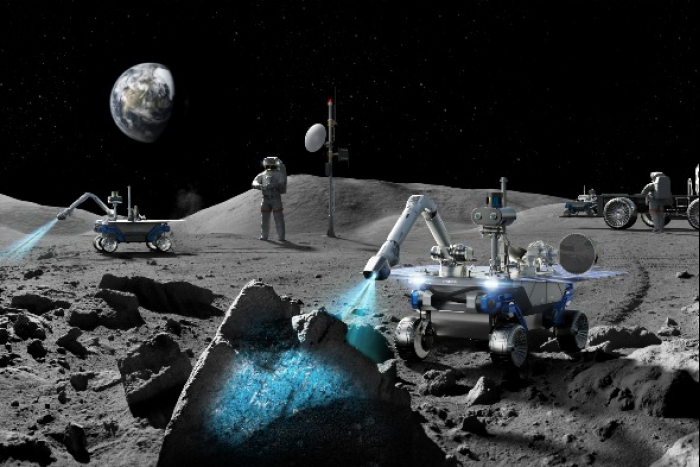Future mobility
Hyundai Motor to develop lunar exploration mobility Rover
The carmaker will roll out the solar-powered self-driving model's final version by 2027
By Apr 20, 2023 (Gmt+09:00)
1
Min read
Most Read
LG Chem to sell water filter business to Glenwood PE for $692 million


Kyobo Life poised to buy Japan’s SBI Group-owned savings bank


KT&G eyes overseas M&A after rejecting activist fund's offer


StockX in merger talks with Naver’s online reseller Kream


Mirae Asset to be named Korea Post’s core real estate fund operator



Hyundai Motor Group is developing the lunar exploration mobility vehicle Rover in expanding its mobility scope to space as well as land, sea and air.
The conglomerate on Thursday said it started production of a development model for lunar explorer with domestic think tanks to contribute to the development of country's scientific research by securing space technology.
Completion of the model is expected as early as the second half of next year. The group will launch a vehicle to explore the moon in 2027 after researching driving and mission performance in an environment like the lunar surface.
The model's concept is small self-driving mobility exclusively for lunar surface exploration through a solar-powered self-charging system and Hyundai's cutting-edge autonomous driving technology.
Jointly with leading think tanks, the carmaker will develop high-level technologies to produce thermal management, radiation shielding devices and metal drive wheels to withstand the extreme environment on the moon's surface such as a temperature gap of over 300 degrees Celsius between day and night.
With a maximum weight of 70 kg, the model will be largely divided into upper and lower parts. The former's main function is exploration of the lunar surface and the latter's is heavy use of Hyundai's innovative technologies used in driving systems.
In July last year, the group signed a memorandum of understanding to develop a lunar Rover with six domestic space-related research bodies like the Korea Astronomy and Space Science Institute, Electronics and Telecommunications Research Institute, Korea Institute of Civil Engineering and Building Technology, and Korea Aerospace Research Institute.
They decided to land the craft on the south lunar pole to perform scientific missions such as mineral collection and environmental analysis.
Write to Il-Gue Kim at black0419@hankyung.com
More to Read
-
 Aerospace & DefenseS.Korea's lunar orbiter Danuri captures back side of the moon
Aerospace & DefenseS.Korea's lunar orbiter Danuri captures back side of the moonApr 12, 2023 (Gmt+09:00)
1 Min read -
 Tech, Media & TelecomS.Korea to focus on secondary batteries, lunar landing vehicles
Tech, Media & TelecomS.Korea to focus on secondary batteries, lunar landing vehiclesApr 04, 2023 (Gmt+09:00)
1 Min read -
 Aerospace & DefenseKorea’s 1st moon probe Danuri enters lunar orbit; world’s 7th mission
Aerospace & DefenseKorea’s 1st moon probe Danuri enters lunar orbit; world’s 7th missionDec 28, 2022 (Gmt+09:00)
3 Min read -
 Aerospace & DefenseS.Korean lunar orbiter sends 'Dynamite' BTS video to Earth
Aerospace & DefenseS.Korean lunar orbiter sends 'Dynamite' BTS video to EarthNov 07, 2022 (Gmt+09:00)
2 Min read
Comment 0
LOG IN


